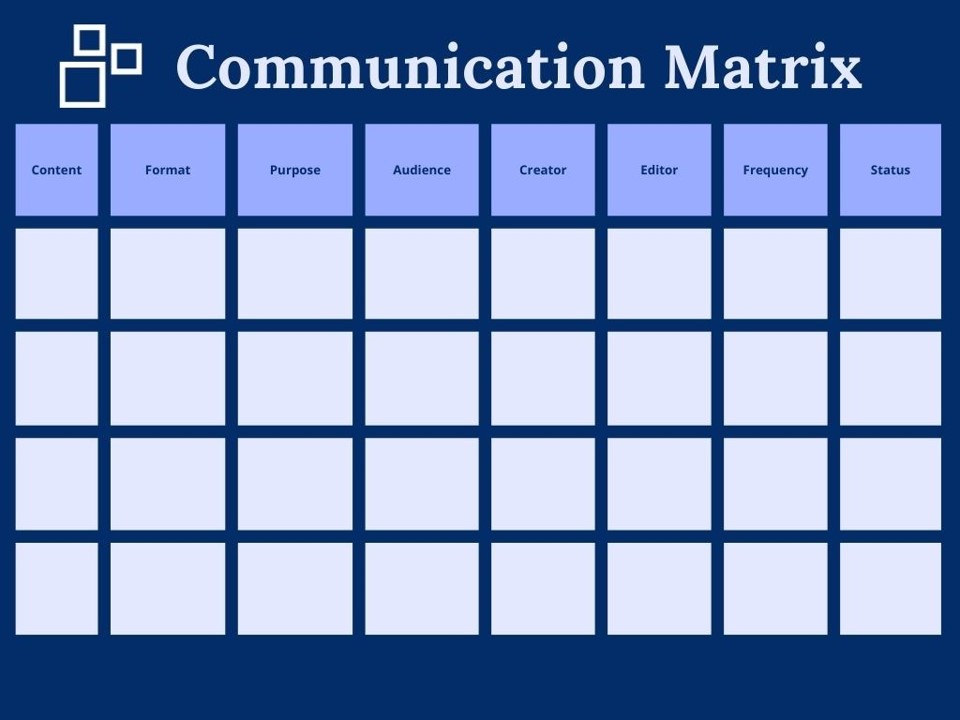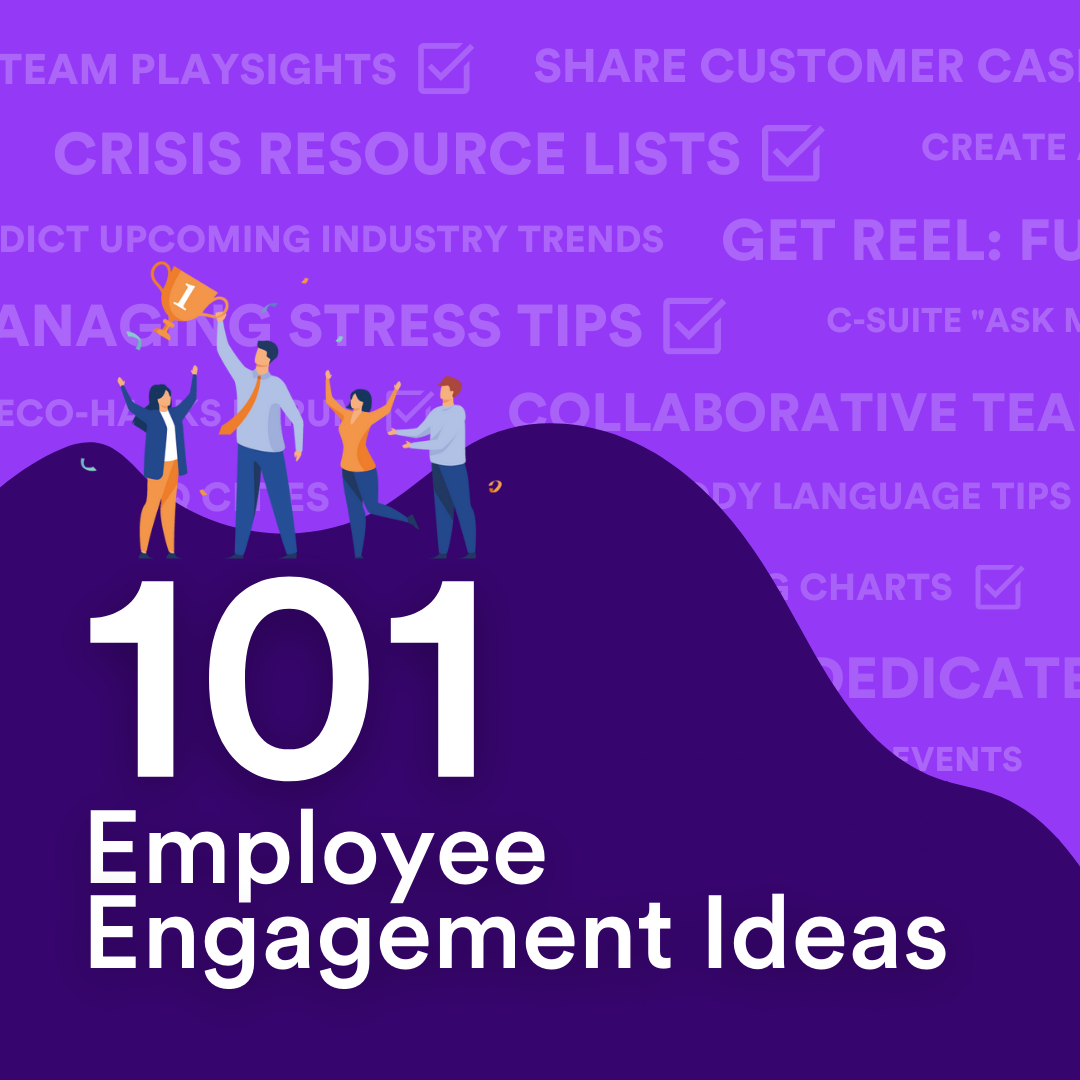This article highlights the importance of internal communication and suggests ways communicators can use a communication matrix for effective project planning. It outlines the benefits of using a communication matrix, provides examples of categories to include, and offers guidance on constructing a matrix for your next intranet launch project.
The Internal Communications team is valued in organizations because business leaders know that communication is much more than distributing information. An effective Comms team can help shape a better employee experience, drive productivity, and boost company culture.
As with any other department in a business, those in charge of communications will have a detailed plan containing goals and KPIs. Inevitably, this internal comms plan will also contain forthcoming projects that tie into the organization’s roadmap and needs. So, whether it’s open enrollment or a planned campaign for communicating a company acquisition or merger, an internal communications plan will have detailed timelines and deliverables for every project.
If you are charged with developing, improving, or delivering that plan, a communication matrix can help. This article sets out how to use a communication matrix when it comes to an internal communications project, such as the rollout of a new intranet.
What is a communication matrix?

A matrix is a simple planning tool that can be constructed without any special software or project management tools; all you need is a sheet of paper and a pen. If you want to be neat then you might also need a ruler—although a collaborative spreadsheet might do the job a little better.
The goal of a planning matrix is to have an up-to-date, accessible overview of key milestones and stakeholders for any project. This may include the people involved, key dates, objectives, audiences, deliverables, and KPIs.
FREE GUIDE – Download 101 Employee Engagement Ideas
Although the details you include will vary according to your project (e.g., an intranet rollout may include which features are planned at different times), the document should give everyone involved a high-level overview of progress and accountability.

Why use a communication matrix?
As our workplaces become more dispersed across a global landscape, running internal communication projects is becoming challenging. But even if you don’t have to accommodate multiple languages and time zones, you may still have to include more than one location or employee cohort.
A communication matrix could include whether your audience is remote or in-office, which devices they have access to, and what kind of shift pattern they work. All of these aspects may impact how you connect with that audience and so could be considerations in the delivery of your internal comms project.
Additionally, a communication matrix:
- can improve communication between different teams because everyone can see what they need to deliver and when.
- streamline projects by laying out all the needed outputs in advance (rather than on an ad hoc basis).
FREE GUIDE – Download 101 Employee Engagement Ideas
Communication matrix examples

The matrix you design will depend entirely on your internal comms project. Most matrices have areas of overlap though, so here are some examples of how you might categorize information you need to track.
Content – What information do you need to deliver? Is it a one-time announcement that needs a multichannel approach or a sustained campaign that will only be distributed via one channel?
Format – Which communication channels will you be using? This can be extremely varied so it may be best to restrict the format to just one channel, such as email, and use subsequent lines in your communication matrix for additional options.
Frequency – Will this recur on a monthly or annual basis, for example?
Creation deadline – The date on which the communicator needs to have a draft complete.
Editing deadline – The time for final edits.
Delivery dates – The time and date of distribution.
Creator – The person responsible for the output.
Approval – Any stakeholders with editorial or managerial approval.
Purpose – Inform? Educate? Entertain? What is your goal?
Audience – As with format, this may vary widely, so be prepared to target specific subgroups of employees per line. It may be just managers or frontline workers for a specific piece.
Measurement – Are there any data measurements you want to take? This may include email open rates, intranet pageviews, or some other engagement metric.
These are just a few of the possible inclusions; your matrix will vary according to the complexity of your project and the size of your organization.
FREE GUIDE – Download 101 Employee Engagement Ideas
How to construct a communication matrix for an intranet rollout

Preparing to launch a new intranet should be exciting and well-planned. As a project that has consumed time, cost, and resources reaches its release, your workforce will need to be engaged and educated on how they should use it and what the benefits are for them.
In many cases, the senior leadership, tech teams, and other stakeholders will already be involved in the development of the new initiative, but the finalized details should still be communicated across the wider business to maximize engagement.
Here’s an example. Let’s say you work for an organization with 10,000 employees spread equally across four countries. You may decide that the most effective way to roll out your new intranet is to cohorts of 2,500 employees defined by their country of residence.
Your communication matrix may then be a series of communicational outputs that build to internal launch events (virtual, hybrid, or in-person) for each phase. This can be an optimal way to work because it allows communicators to test and learn from each phase—to see what went well and what can be improved for the next time.
An intranet launch communication matrix may start by looking something like this:
| Content | Format | Audience | Creator | Approval | Deadline | Distribution | Status |
| PHASE 1 | |||||||
| Teaser | NYC office | John K | Fauzia J | 6/12 | 6/21 | Done | |
| Teaser | Remote | John K | Fauzia J | 6/12 | 6/21 | Done | |
| Teaser | SMS | All | John K | Fauzia J | 6/12 | 6/21 | Done |
| Teaser | Digital signage | Frontline | John K | Fauzia J | 6/12 | 6/21 | Done |
| Event invite | All | John K | Fauzia J | 6/12 | 6/21 | Done | |
| Event invite | Letter & gift | All | Saul N | Daisy B | 6/15 | 6/30 | In progress |
| Event | Hybrid (Zoom & NYC office) | All | Karen O | Julian C | 7/14 | 7/14 | In progress |
| ICYMI recap | All | John K | Karen O | 7/12 | 7/15 | Not started | |
| ICYMI recap | SMS | Frontline | John K | Karen O | 7/12 | 7/15 | Not started |
Each following phase can replicate the same content and formats or be adjusted to account for the different audiences within each country.
Similarly, if a small percentage of employees attended the event then perhaps there was not enough communication in advance, so more should be added in.
However you choose to communicate your intranet rollout, a one-page communication matrix is one of the simplest ways to compile details on all the outputs, deadlines, and stakeholders that you need to keep your project on track.
What does a good intranet launch look like?
Now that you’ve started thinking about intranet launches, why not check out these additional articles for lots more information on the best launches that we’ve seen:
- 7 essential questions for a successful intranet campaign launch
- An intranet launch is a milestone, not a finishing line
- Launching an intranet: 4 award-winning launch campaigns to inspire you


